
Types of properties in Spain, on the Costa Blanca
If you are planning to move to Spain and invest in properties, it is important that you familiarize yourself with the different types of property available on the market to make the buying or renting process easier.
As there is such a wide variety of property types on the market in Spain, which can be overwhelming in another language, we thought we would give you a simple guide to the types of property you will find for sale and of course some advantages and cons of each.
1. Apartment
If you live in a city in Spain, then the most common housing option is an apartment, known in Spanish as a piso. Apartment blocks are very common throughout Spain, while the quality and size of these properties vary enormously, from a small studio to a 2-storey duplex or luxury penthouse. Please note that under Spanish law, all apartment owners in Spain automatically become members of the community of owners, or community of neighbors (community of owners of their apartment block) and must abide by the community rules and pay community taxes. These rates will be higher if the block has common areas such as a swimming pool, tennis courts or a garden.
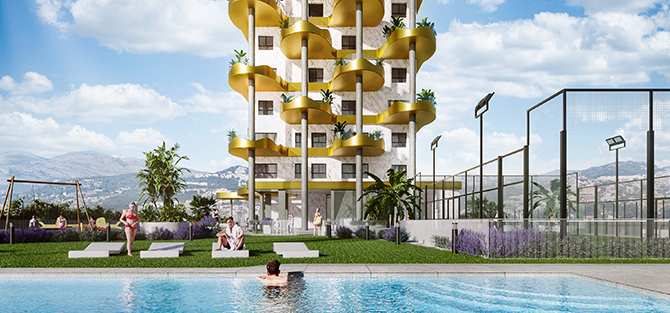
Benefits:
• Less maintenance than a house
• Good security, especially if the block has 24 hour security or a concierge
• Use of common areas
Disadvantages:
• Noisy neighbors
• Poorly maintained communities
• Congested common areas during vacations
2. Villa
It is much less common for people in Spain to live in a single-family home (casa, chalet or villa) and in many large cities it is difficult to find a large single-family home. On the Spanish coast, however, single-family homes are much more common than in other parts of the country and are associated with holidays in most cases. Most of the time they are owned by foreigners or Spaniards who use them as a second residence for weekends and summer vacations. It is not uncommon to find villas that are part of a residential complex, and in addition to those that will have their own private pool and garden, others may have common areas with a shared pool and other facilities. Chalet refers to a Spanish villa built on a large plot of land between 400 and 3,000 square meters.
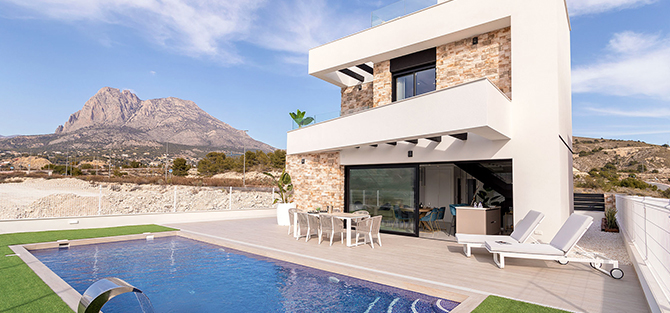
Benefits:
• They are not attached to other units
• More spacious
• More peace and quiet since they are generally located outside of urban areas.
Disadvantages:
• Higher operating costs
• Being outside of urban centers can make the village isolated
3. Townhouse / Adosado
Townhouse is a semi-detached house, a semi-detached villa, but the name generally applies to a style of multi-story house that shares one or two walls with adjoining properties. Each has its own entrance and a small front and back garden. You will usually find houses on the outskirts of cities and can often be a more affordable option compared to buying a villa.
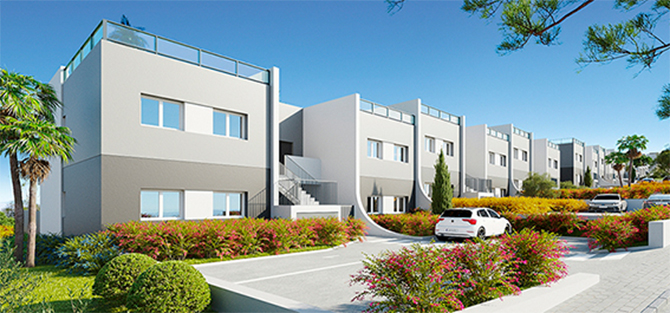
Benefits:
• Cheaper than the villas
• They usually come with common facilities
• More spacious than an apartment
Disadvantages:
• Thin walls between properties can mean more noise
• Less privacy
4. Bungalow
Bungalows are also popular in the coastal regions of Spain, but don't confuse the Spanish version of a bungalow with the typical English meaning. While in the UK a bungalow refers to almost any single-storey detached house, in Spain a bungalow refers to an apartment in a 2-storey house with a large terrace, a characteristic flat roof and a lovely terrace. These types of spaces are perfect both for personal use homes and for tourist rental.
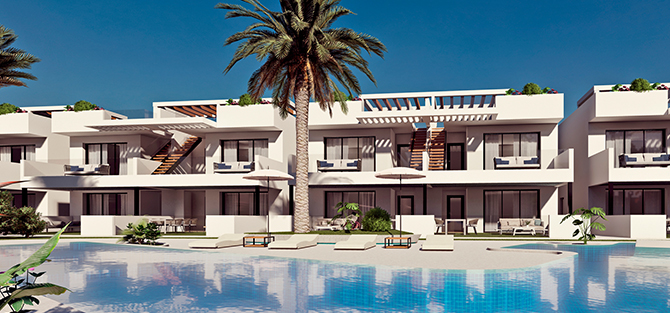
Benefits:
• Cheaper than a villa
• Lower maintenance costs
Disadvantages:
• Lack of space
5. Residential housing complex
Urbanizaciones or residential estates, known in Spanish as 'urbanizaciones', are purpose-built housing estates that can consist of apartments, houses and villas. They are common throughout Spain and form an essential part of Spanish coastal resorts, as well as being an excellent option for all budgets, as one urbanization can accommodate a mix of apartment blocks, houses and individual villas.
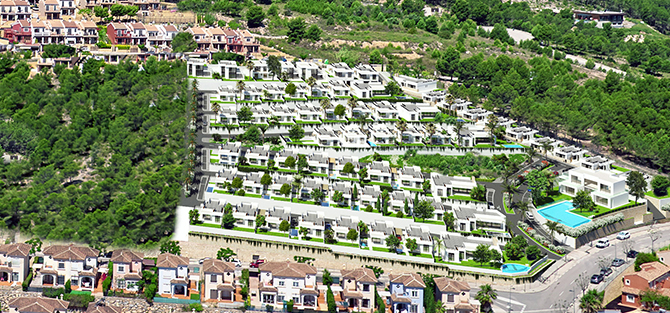
Benefits:
• Security
• Good for foreigners who want to live in a community
Disadvantages:
• Less privacy
• Can be expensive
6. Rustic properties
Rural properties in Spain, whether small town houses (casa de pueblo) or larger fincas or fincas with land (casa rural), here you will get an authentic experience of the Spanish countryside. Property here can be very spacious and is generally cheaper than the coastal resorts in Spain as well as being widely available, however be aware that you will most likely need to renovate these properties unless you are paying more for a property that has already been updated

Benefits:
• More economical
• Peaceful lifestyle
Disadvantages:
• Properties with a lot of land require a lot of maintenance.
• Properties tend to be older and need work

 En
En









